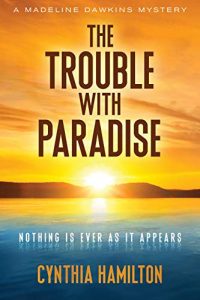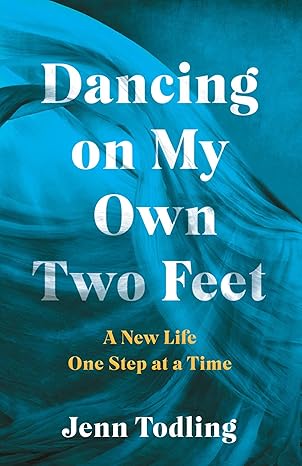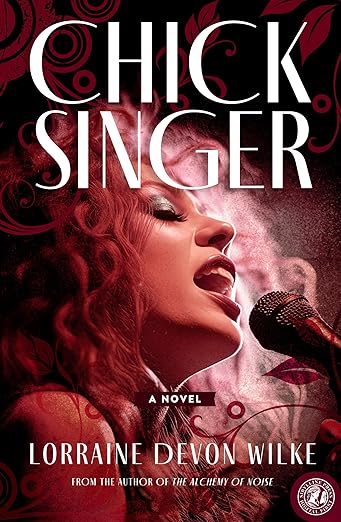Writing With Illness
 My life took two distinct turns in 1998—make that three. It was the year I had to take over the management of my husband’s mortgage company, which coincided with a frenzied refinance boom. I had been plucked away from making mosaic furniture, cutting marble, granite and Murano glass on my tile saw. Tactile, creative work, the kind of thing I’d always been drawn to. Prior to my induction into the workforce, I’d harbored two major phobias in my life: cooking in a restaurant and having to work in an office environment. The latter probably accounts for why I had never even learned to type. But learn to type I did, quickly.
My life took two distinct turns in 1998—make that three. It was the year I had to take over the management of my husband’s mortgage company, which coincided with a frenzied refinance boom. I had been plucked away from making mosaic furniture, cutting marble, granite and Murano glass on my tile saw. Tactile, creative work, the kind of thing I’d always been drawn to. Prior to my induction into the workforce, I’d harbored two major phobias in my life: cooking in a restaurant and having to work in an office environment. The latter probably accounts for why I had never even learned to type. But learn to type I did, quickly.
After working ten-hour days for months on end, the refi market cooled down enough for me to realize I was having a lot of peculiar aches and pains, accompanied by rashes, loss of coordination, numbness and tingling. Thinking I might have a vitamin deficiency or something else innocuous, I went to see an internist, who promptly sent me to a neurologist. After a full battery of tests, I was passed on to a rheumatologist. On and on it went for two years, one specialist after another.
Several doctors later, I gave up. My symptoms had expanded and the pain had become overwhelming. None of the medications I’d taken had any positive effect, and the doctors had run out of ideas. I started thinking about things I could do if I became bedridden. I figured with a laptop computer I could write, now that I knew how to type.
Books had always played a big part in my life, thanks to my mom reading to us when we were young. I became ravenous for them in my late teens as I discovered I could learn more about this great big world of ours through authors like Michener, Tolstoy and Hemingway. I was in awe of writers and I distinctly remember thinking more than once that I couldn’t write a book to save my life.
But, approaching the idea from a practical angle, I completely forgot about my lack of writing ability. I started my first book on my next birthday; one year later, I finished my first novel and started the second one the same day. I was hooked, and I never looked back.
Even though my health steadily deteriorated, I had to keep working. It was a point of pride for me that I kept up with everything in my life. I was determined that whatever was destroying me from within would not rob me of my identity. I was incredibly stubborn in that regard, and it cost me plenty.
In the nine years it took to finally learn what was wrong me, writing became the place I could escape to. It allowed me to crawl up into my head and get out of my body for brief periods of time. It was my tether to sanity, the one thing that gave me hope I could survive whatever was trying to kill me.
After the initial elation of having gotten the correct diagnosis—Lyme disease, or rather late-stage Lyme because it had been allowed to flourish for so long—the real agony began. Lyme puts up quite a fight when it’s being attacked. The “die-off” was so brutal, I didn’t know how much more I could stand. The only thing that made me feel like I still had a part of myself was writing, which I was forced to give up for a while when the pain became too great.
During the eighteen years since I took that first leap of faith, I have written eleven books and self-published nine of them. I just recently published the fourth installment in my Madeline Dawkins Mystery Series. I’ve written two memoirs of sorts, one about my battle with Lyme disease called ONCE UPON A LYME… THE TALE OF TWO JOURNEYS in hopes it would be of some use to fellow sufferers and/or their loved ones. It chronicles my experiences with the insidious disease and the unexpected blessing of becoming a writer.
As strange as this may sound, I wouldn’t change the path my life took because writing has brought me more joy and a deeper sense of fulfillment than I think I could’ve gotten any other way. Lyme nearly killed me, but I am stronger in many ways for having gotten to this stage. I am reminded when I go at full-tilt mode for too long that the monster is still with me. But most of the time I have the upper hand.
Writing also allowed me to better understand what my Mom’s life had been like when Alzheimer’s robbed her of her memories. She had a razor-sharp mind that held a lifetime of disappointment and bitterness. My efforts to make her life better fell short, leaving me with a mix of feelings. The irony of her disease was having a warmhearted and loving mother once her bitter memories had been erased. She doesn’t remember who I am, but she has so much love in her heart now, it’s a joy to see.
Finding a previously unseen photograph of her when she was 19 made me realize that I didn’t know who she was before I came along. I became obsessed with piecing her life together, trying to understand what it had been like from her POV. Writing FINDING RUTH gave me a renewed love and appreciation for a woman who now embodies pure light and love. A mixed blessing, to be sure, but I consider it a gift. Another gift from this wonderful profession of writing.
Just a couple of illustrations of what can happen when you forget your limitations.
Happy reading and happy writing to all!
Cynthia
—
Cynthia Hamilton has been writing since 2000, when a collection of bizarre physical problems forced her to find a creative outlet she could pursue from bed, if it came to that. Since then, she’s written several novels and two memoirs. She loves creating characters and setting them down in situations to see how they react. Most of her stories spring entirely from an overly-fertile imagination. Her latest—The Trouble with Paradise—is the fourth book in the Madeline Dawkins Mystery Series.
 Two dead husbands. Accident, suicide or murder?
Two dead husbands. Accident, suicide or murder?
Life in beautiful Santa Barbara County will never be the same for two grieving widows. One is serving a lengthy sentence for the bizarre tractor death of her much older, land-rich husband. The other is convinced her husband’s death was no suicide.
During Madeline’s four-month convalescence, Steven Ridley—her jailbird ex—manages to get parole on the pretext of retraining inmates for their reentry into society. He has the audacity to enlist Mike’s help to find out if inmate Lindsay Bartholomew had been set up to take the fall for her husband’s death.
Santa Barbara D.A. Conrad Adams makes a personal appeal to MDPI on behalf of Natalie Sheckle, hoping Madeline and Mike can prove whether her husband took his own life, or if someone stitched him up for his own murder.
Never ones to shy away from longshots or lost causes, the duo dives into both cases. But now they must figure out what secrets these two men took to their graves.
The Trouble with Paradise is the fourth book in the Madeline Dawkins Series
Category: Contemporary Women Writers, On Writing
Comments (2)
Trackback URL | Comments RSS Feed
Sites That Link to this Post
- Five Links 9/6/19 Loleta Abi | Loleta Abi Author & Book Blogger | September 6, 2019





























So honored to share my story on Women Writers, Women’s Books. Many thanks to Barbara for asking me to contribute. Happy reading, happy writing to all!